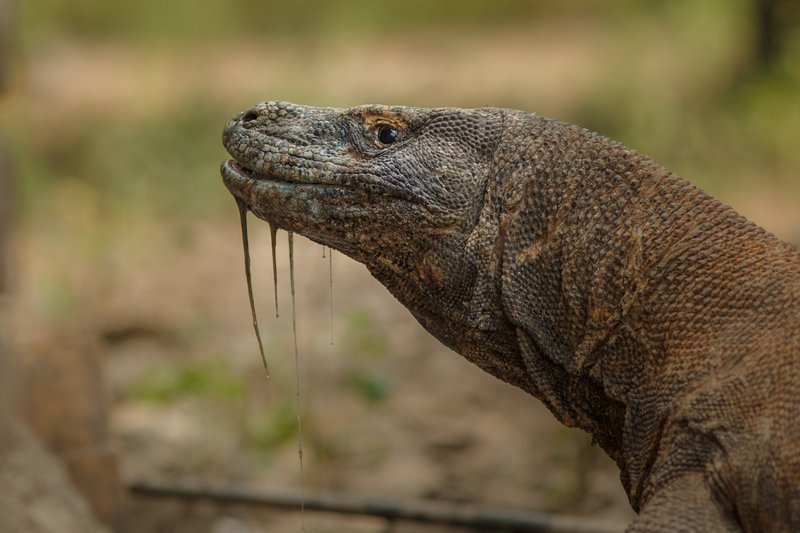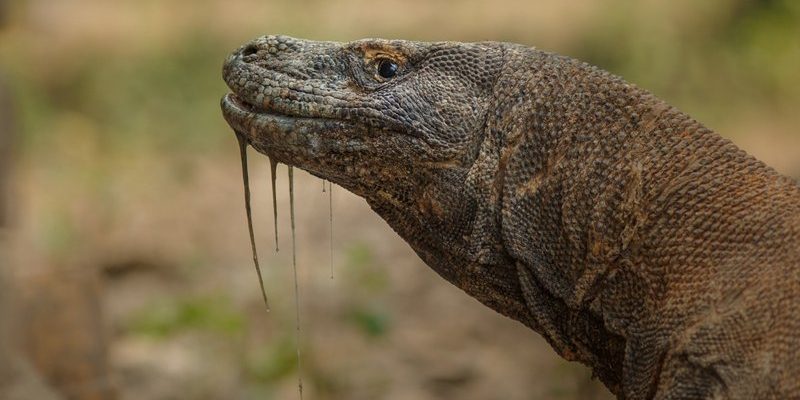
Imagine for a moment that you’re stepping into a time machine. You dial it back to the age of dinosaurs and encounter giant reptiles roaming the land. While the Komodo dragon may not be a dinosaur, its ancestors were indeed contemporaries of those ancient giants. Understanding the evolutionary history of the Komodo dragon helps us appreciate how such a unique creature came to be. So, grab your favorite drink, and let’s explore this incredible journey through time!
The Origins of the Komodo Dragon
The story of the Komodo dragon starts in the Late Cretaceous period, about 70 million years ago. Back then, Indonesia was part of a vast archipelago that was home to a variety of reptiles. The ancestors of the Komodo dragon likely evolved from a group of large lizards called Monitor lizards. These lizards went through significant changes over millions of years, adapting to their environments in various ways.
As these early lizards spread throughout the islands, they faced different challenges that shaped their evolution. One key factor was island dwarfism—a phenomenon where species that are isolated on islands evolve to be smaller due to limited food resources. However, in the case of the Komodo dragon, the opposite happened. They became larger, likely because their size gave them an advantage in hunting larger prey, like deer and wild boar.
It’s intriguing to think how these early lizards navigated their environment, developing traits that would eventually lead to the mighty Komodo dragon. Their evolution showcases the power of adaptation, allowing them to thrive in an ecosystem filled with unique challenges.
Characteristics and Adaptations
Fast forward to the present day, and the Komodo dragon boasts some incredible characteristics that make it a true survivor. Growing up to 10 feet long and weighing over 150 pounds, these lizards are not just big; they’re powerful. Their strong jaws and serrated teeth are perfectly designed for tearing flesh. It’s like they were built for the hunt.
One of the most fascinating adaptations of the Komodo dragon is its venom. Although they might look like simple reptiles, these dragons have a complex venom system that helps them incapacitate their prey. Their saliva contains toxic proteins that can cause severe blood loss and shock in their victims. This clever adaptation allows them to take down animals much larger than themselves. Imagine being able to take out your dinner without needing to wrestle it to the ground!
In addition to their hunting prowess, Komodo dragons are also excellent at regulating their body temperature. Living in a warm climate, they bask in the sun to warm up and seek shade when it’s too hot. This ability to thermoregulate is essential for their survival, especially when temperatures can swing dramatically in their natural habitat.
The Role of Habitat in Evolution
The habitats of the Komodo dragon play a crucial role in their evolution. Found primarily in the Komodo National Park, these lizards dwell in savanna grasslands, forests, and open scrub areas. The unique geographical features of these islands have shaped their development over time.
Living on islands has many advantages but also presents challenges. For instance, with fewer predators but limited food sources, the Komodo dragon had to adapt its hunting strategies. Their keen sense of smell, which can detect carrion from miles away, allows them to scavenge effectively when hunting isn’t successful. It’s like having a built-in GPS for food!
Moreover, the isolation of these islands has led to a unique gene pool. Without the influx of new genetic material, the Komodo dragon has developed certain traits that are distinct to its species. This isolation is a double-edged sword; while it promotes uniqueness, it also makes them vulnerable to diseases and environmental changes.
Evolutionary Relationships
If you’re wondering how the Komodo dragon fits into the larger picture of the animal kingdom, it’s all about evolutionary relationships. The Komodo dragon belongs to the Varanidae family, which includes other monitor lizards. Interestingly, studies suggest that they share a common ancestor with primarily terrestrial lizards, meaning they have a long lineage that ties them to other reptiles.
Furthermore, research indicates that the Komodo dragon’s closest relatives are the Sunda monitor lizard and the Timor monitor lizard. These family ties emphasize the importance of evolutionary history in understanding how species adapt over time. Each of these lizards has its unique adaptations, influenced by their surroundings and life history.
This connection to other reptiles showcases the beautiful diversity of the animal kingdom, as each species works to thrive within its niche. It also highlights the importance of conservation, as protecting one species ensures the survival of its relatives, too.
Threats and Conservation Efforts
As fascinating as the Komodo dragon’s evolutionary history is, it faces significant threats today. Habitat destruction due to human activity, along with climate change, poses challenges to their survival. You might be wondering why this matters—it’s not just about saving one species; it’s about preserving a whole ecosystem.
Several conservation initiatives are underway to protect these incredible creatures. The Komodo National Park plays a vital role by safeguarding their natural habitat and ensuring proper management of resources. Efforts include monitoring populations, conducting research, and raising awareness about the importance of conserving these unique lizards.
Additionally, local communities are being engaged in conservation efforts. When people understand the value of the Komodo dragon to their environment and economy—such as ecotourism—they are more likely to support protective measures. It’s a positive cycle that can lead to better outcomes for these majestic lizards.
The Future of the Komodo Dragon
Looking ahead, the future of the Komodo dragon hangs in a delicate balance. As climate change continues to impact their habitat, the resilience of these reptiles will be tested. However, with concerted efforts from scientists, conservationists, and local communities, there’s hope.
Understanding their evolutionary history is crucial as it provides insights into their needs and challenges. By preserving their habitat and promoting biodiversity, we can ensure that these incredible creatures continue to thrive for generations to come.
So, the next time you hear about the Komodo dragon, remember that it’s not just a fascinating lizard. It’s a remarkable survivor with a rich evolutionary story that teaches us about resilience, adaptation, and the importance of protecting our natural world.
In conclusion, the evolutionary history of the Komodo dragon isn’t just a tale from the past; it’s a reminder of how interconnected life on Earth is and how vital it is to protect all species. From its powerful adaptations to unique habitats, the journey of the Komodo dragon captivates our imagination and calls us to action in the face of environmental challenges. Let’s work together to ensure that this living dragon remains a part of our world.

